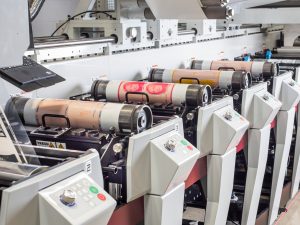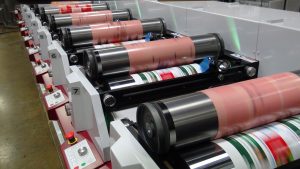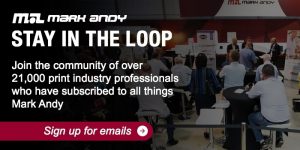Optimizing Your Pressroom Efficiency Metrics
Let’s face the facts, the profitability of any printing company is driven by their pressroom efficiency. Our industry has faced numerous changes including, shorter run lengths, more SKU’s, shorter lead times, increased pressure from competitors, continuous cost increase, and the list goes on. All of these changes leading to lower margins. In this blog, I’m taking off my Dr. Flexo lab coat and putting on my drill instructor hat to help you improve your pressroom efficiency.
How Do You Measure the Efficiency of Your Pressroom?
The majority of you are most likely reporting a job end recap weekly or monthly and comparing the actual time and material used for each job against the estimated. If your numbers meet or beat your estimate then you are in the clear. Is this the best means of measurement of pressroom efficiency in today’s manufacturing environment?

Overall Equipment Effectiveness
Overall Equipment Effectiveness (O.E.E.) is the amount or percentage of time that your asset, in this case, your printing press is actually producing a salable product. Keep O.E.E. top of mind as you read through the remainder of this post.
Let’s complete an exercise to determine an estimate of your O.E.E. For this part of the blog- grab a piece of paper. Take any press in your facility and think about the percentage of time that asset is actually producing a salable product. Write this number down. How accurate do you think your estimate is?
Getting Your Actual O.E.E.
Most businesses are not running their assets around the clock 365 days a year. Knowing this, let’s take a simplistic view into a small operation running a single piece of equipment five days a week X eight hours a day.
Taking this one level down to job setup, color matching, waiting on needed components, waiting for the OK to run, job changeovers, reruns, roll changes, cleanups, and operator absenteeism… All of this time is nonproductive time. In an 8 hour shift, you can lose 12.5% O.E.E. in this period of time, not to mention the material waste generated from the press stopping and starting back up again.
Hopefully, this has gotten your attention.
When you take the time to do a hard scrub of your actual O.E.E., the number can sometimes be disheartening. But no fear, you need to establish a baseline to make any trackable improvements.

The First Step Towards Improvement
We’ve all understand the importance of Lean Manufacturing, but what steps have you taken within your organization to effect change where it really matters (ex: improving your O.E.E.)? A little secret to where I believe the biggest improvements in O.E.E. can come from your press operators.
Press Operators are the individuals who are directly impacted by everything that can stop a press from being productive. To list a few, last-minute schedule changes, waiting on components, waiting for job approval, disorganized work area and many more. A great exercise I recommend partakes in is to ask your press operators to list 3 things that if improved, would make them and their press more productive. Compare these lists against operators and shifts and I’m sure you’ll quickly start to see a pattern. These initial items from your press operators are usually the easiest to address and approve.
There’s Nowhere But Up
I encourage you to keep thinking about your O.E.E. and dive into what your actual number is. At a prior job working in plant management the best O.E.E. I achieved in a facility with ten flexo presses was a blended average of 43%. Some presses had extremely high O.E.E. and others had low. The number you are at now is nothing more than a starting point and certainly an area within your organization that needs attention in this ever-changing competitive industry.
As a closing note, I wouldn’t be Dr. Flexo if I didn’t remind you that to get the most out of your press you need to be using the right pressroom consumables. If you have questions about OEE or what supplies you should be using for optimal performance, contact your Mark Andy Print Products technical supply expert.
About the Author
Dr. Flexo (Bill Enright, Senior Applications Engineer at Mark Andy) has been in the printing industry for over 30 years, serving in a variety of different roles from plate mounting to operations management. Bill has earned his doctorate in printing. Throughout the years, he’s learned the quality of a print job is only as good as the consumables that go into it.
